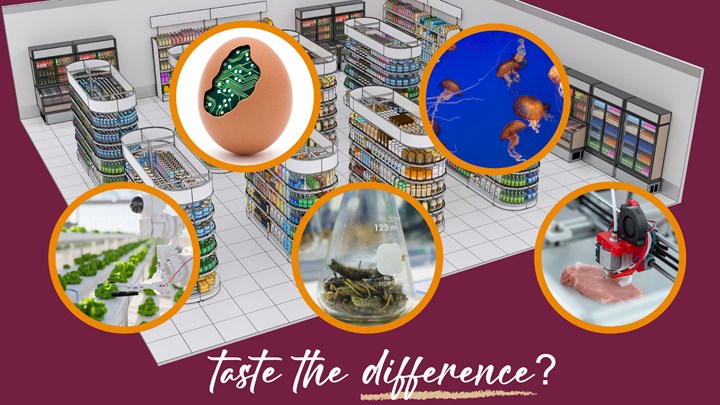Content Sections
WHO guidelines on dietary fat attacked by scientists
A review by an international group of leading scientists from top universities and nutritional research institutions published in the BMJ questions the World Health Organization’s (WHO) advice to cut saturated fats in the diet. It warns that following the guidelines could cause the very diseases they seek to reduce or prevent. The study also cautions that cutting out foods containing saturated fats may result in a reduced intake of essential nutrients. The study goes on to highlight the lack of findings connecting saturated fat and heart disease. Check out our recent video and article to find out more about the benefits of healthy fats (including saturated!) for your health.
Tree planting best solution for climate change
A group of Swiss, Italian and French scientists, publishing in Science magazine, argue that tree planting is likely the most effective and cheapest way of mitigating greenhouse gas emissions and associated climate change. They argue there’s currently space to plant around 500 billion trees on nearly 1 billion hectares (an increase in around 25% of the present forested area). This, they say, has the capacity to absorb some 200 gigatonnes of carbon at maturity. They estimate such a programme could remove two-thirds of human based emissions in the next 50-100 years. However, in order to be effective, all deforestation activities and burning of fossil fuels will need to be halted to prevent further increases in greenhouse gases. The lead scientist, commenting in the Guardian newspaper said this is “a climate change solution that doesn’t require President Trump to immediately start believing in climate change, or scientists to come up with technological solutions to draw carbon dioxide out of the atmosphere”.
First it was ‘superfoods’, soon there will be ‘hyperfoods’!
As researchers struggle to find new ways to combat cancer, scientists at Imperial College London using artificial intelligence (AI) are working to identify active molecules in plant foods with anti-cancer properties. Their aim is to create what they call ‘hyperfoods’ and ‘gastronomic medicine’ to tackle not only cancer, but other chronic disease. That’s an interesting notion given the EU’s ban on the term ‘superfoods’ when applied to commercially available foods. While researchers continue to hunt down ‘silver bullets’ that might help deliver their research grants and keep them in favour with the agri-industrial-food complex, heritage varieties cultivated in sustainable, agro-ecological systems already provide the spectrum of phytonutrients, fibres and other nutrients required for health and resilience. Cancer remains the second-leading cause of death after heart disease in the US (and most other industrialised countries) according to the latest figures from the American Cancer Society. Dietary patterns, as in the ‘what, how and when’ we eat, remain among the most important modifiable risk factors in tackling the development of cancer and other chronic disease.
Have we had our fill of sweet food?
Research at the Monell Center in Philadelphia, the world’s leading, independent, non-profit research institute focusing on our sense of taste, suggests that consumers may finally have decided that too many commercial foods are too sweet. The conclusions are based on a comprehensive study of Amazon reviews, based on nearly 400,000 unique food product reviews by over 250,000 reviewers rating nearly 70,000 products. While bitter foods are an essential part of nature’s preventative medicine chest, plant breeding programmes focusing on ‘desirable’ traits such as sweetness have increasingly bred out bitter principles, so contributing to increased cancer and heart disease risk. In support of the findings from the study of Amazon reviews, Mattson’s 2019 10 Macro Trends report forecasts that foods will become less sweet in future. However, as food producers move to lower sugars in food products, the market for artificial sweeteners is still predicted to grow to $13,421.5 million by 2023 bringing with it its own unique set of health risks.








Comments
your voice counts
12 July 2019 at 1:56 pm
As regards trees being the answer to climate change. First, there cannot be any discussion about the climate until the subject of Climate Engineering (Geoengineering) is taken into account because that has been covertly going on now for 70 years killing the trees and the whole web of life. Secondly, trees planted have very little chance of surviving the first year after planting, because of the aluminium nanoparticulates that are part of the patented geoengineered spray mix -. It blocks the uptake of nutrients through the roots and also kills the beneficial bacteria in the soil. If no one has noticed because they are too preoccupied with staring at their Iphones - the trees are dying everywhere. Usually dying from the top-down from the incendiary dust coating the leaves from the geoengineering (also increasing wildfires) and from the roots, as discussed above, (especially if near a water source). Also, they are cutting down trees in many towns and cities (because they will block 5G when it is deployed). Academia should tell the truth and talk about what is really happening - "climate modification" NOT climate change because it is not a "natural" occurrence. Experienced forestry people who once planted hundreds of trees and saw them most grow to maturity are now planting and finding none survive their first year. But then we know that they have invented GMO trees (along with GMO seeds) which are aluminium resistant - what a surprise!
12 July 2019 at 4:40 pm
I couldn't have put it better myself! Why is no one talking about it?
Every single day are skies are polluted with chemtrail spraying and yet we are being increasingly taxed with 'green taxes' because the so called 'experts' have managed to convince the public that it is our fault! They are even teaching it in schools now so the next generation can be 'brain washed' into thinking that they can save the planet.
As for planting more trees, until we stop de-forestation of the Amazon rainforest and stop idiotic practices such as 'carbon capture' and 'carbon sequestration' the planet is going to go on dying. The trees in our cities are being removed and also along our rail lines for, as the previous post suggests, for the implementation of the 5G network. Humanity is under attack from all sides, GMOs, EMFs, the next thing will be control of the global water supply. Planetary extinction, here we come!!
Your voice counts
We welcome your comments and are very interested in your point of view, but we ask that you keep them relevant to the article, that they be civil and without commercial links. All comments are moderated prior to being published. We reserve the right to edit or not publish comments that we consider abusive or offensive.
There is extra content here from a third party provider. You will be unable to see this content unless you agree to allow Content Cookies. Cookie Preferences